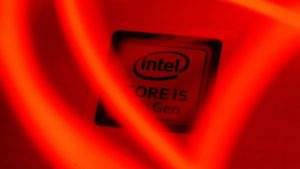Unlike your parents or grandparents, you’re not motivated by a raise or promotion. Today, what really motivates employees involves a wide-range of well thought out drivers like feeling appreciated, doing meaningful work, and having a healthy work-life balance.
But, out of all of these ways to motivate employees, what really keeps them pushing forward? Here’s what research has revealed when it comes to motivating employees.
It’s Not All About the Benjamin’s
Dan Ariely, a psychology professor at Duke University and author of Payoff: The Hidden Logic That Shapes Our Motivations, recounted an interesting study that took place in an Israeli semiconductor factory.
The workers received one of three messages at the start of their workweek. They would either receive a voucher for a free pizza, a $ 30 cash bonus, or a compliment from their stern boss if they reached a goal. However, a quarter of the factory’s employees did not receive any message since they were the control group. The results, via New York Magazine, were interesting.
“After the first day, pizza proved to be the top motivator, increasing productivity by 6.7 percent over the control group, thereby just barely edging out the promise of a compliment (in the form of a text message from the boss that said “Well done!”).”
Even more surprising, “On the second day of the workweek, those in the money condition performed 13.2 percent worse than those in the control group. This leveled out over the next several days, but for the week overall, the cash bonus ended up costing the company more and resulted in a 6.5 percent drop in productivity.”
When the study concluded, it was found that the compliment came in first place, while pizza was in second.
Other Employee Motivators
This wasn’t the only study that showed that money isn’t the main things that motivates employees. In fact, one study found that performance-based pay incentives can actually backfire.
“We find that financial incentives may indeed reduce intrinsic motivation and diminish ethical or other reasons for complying with workplace social norms such as fairness,” said Bernd Irlenbusch, of the London School of Economics department of management.
There’s actually a pretty good reason for this, according to Wharton professor Adam Grant.
“Extrinsic motivators can stop having much meaning — your raise in pay feels like your just due, your bonus gets spent, your new title doesn’t sound so important once you have it,” he told The Wall Street Journal. “But the sense that other people appreciate what you do sticks with you.
In other words, of course money matters to your employees. But, for a majority of them, it’s not their main motivation.
A Fun and Positive Work Environment
If your employees aren’t motivated by money, then what really motivates them? One study funded by Make Their Day, an employee motivation firm, and Badgeville, a gamification company, that surveyed 1,200 employees found that:
- 90 percent said a “fun work environment” was very or extremely motivating.
- 88 percent found praise from managers very or extremely motivating.
- 83 percent of respondents said recognition for contributions was more fulfilling than any rewards or gifts.
- 76 percent found peer praise very or extremely motivating.
Appreciation
A separate study from Glassdoor discovered that over 80 percent of employees are motivated to work harder when their boss shows appreciation for their work. Over half of employees reported that they would stay longer at the company if they felt more appreciation from their boss.
The study also found that 46 percent of employees would feel more appreciated if their boss gave them an unexpected treat. This included anything from snacks, lunches, dinners, or thank you notes.
“There is a wide variety of ways to show employee appreciation that can go far towards keeping employees satisfied, engaged and retained,” said Allyson Willoughby, Glassdoor’s senior vice president of people and general counsel. “Even inexpensive forms of appreciation, like thank you cards and treats, or offering flexibility like telecommuting, show employees you value them.”
Other ways to show employees appreciation include involve them in the decision-making process. Also, give them career opportunities and recognize them at a team meeting or in a company newsletter.
Peer Pressure
When asked 200,000 employees, “What motivates you to excel and go the extra mile at your organization?,” employee engagement firm TINYpulse, found that their peers were the number one influence.
According the survey, “Compensation is now viewed as just the baseline reason for taking a job. Camaraderie plays the true motivating role in encouraging employees to outperform expectations.”
Following camaraderie and peer motivation, employees reported that they were most motivated by:
- Intrinsic desire to a good job.
- Feeling encouraged and recognized.
- Having a real impact.
- Growing professionally.
- Meeting client/customer needs.
- Money and benefits.
- Positive supervisor/senior management.
- Believe in the company/product.
Work-Life Balance
A 2015 report on Millennials from the US Chamber of Commerce put an emphasis on flex-time. And, for good reason. It found that three out of four Millennials reported that work-life balance drives their career choices.
David Rook of the JP Griffin Group adds, “Millennials value flexibility above many things. They want to telecommute, make their own hours and might even be willing to accept a lower salary if it means wielding more choices when it comes to commanding their work schedule.”
Despite the importance of a healthy work-life balance, Millennials still look for organizations that offer a decent salary, benefits, and retirement packages.
Leading By Example
Finally, an employee survey from the National Business Research Institute (NBRI) “used the Root Cause Analysis to identify the items that were driving employee perceptions.” The survey found that employees are motivated by management that is approachable and easy to talk with.
Employee motivation increases when they are provided with resources and equipment to do their job. A big motivation also involves management’s ability to keep employees informed about important issues and changes.
A Global Perspective on What Motivates Employees
Leadership also plays a big role in motivating employees from around the world. Marcus Buckingham, founder of the TMBC Global Engagement Index, found that different countries have various drivers of engagement. These are:
- US, China, Germany: The most engaged teams need to rally around a shared mission.
- UK and India: It’s important to have teammates with shared values.
- France, Canada, Brazil and Argentina: Engagement relies on the feeling that teammates have their back.
- Australia: Confidence in the company’s future boosts engagement.
- Spain: These employees like the challenge to grow by adding skills.
“Perhaps we shouldn’t have been surprised [by these differentiators],” Buckingham told Fast Company, “since some of these patterns do appear to fit, in the broadest sense, the politico-social climate of each country.”
What Motivates Employees?
Did you notice a theme among the research listed above? The main motivators for employees all point to having a positive attitude to toward their corporate culture.
Employees want encouragement and support. They prefer to work in an organization that fosters growth and where they feel they’re making a difference. And, they long for leaders who display appreciation and gratitude.
Business & Finance Articles on Business 2 Community
(62)
Report Post





